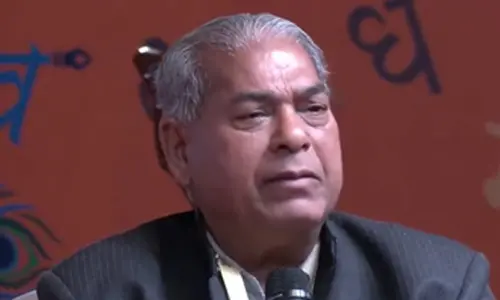Novel supercapacitor with enhanced energy storage capacity developed

Novel supercapacitor with enhanced energy storage capacity developed
Researchers have developed a novel ultramicroscopic supercapacitor with enhanced energy storage and release capacity, which is fully functional and ready for deployment in any miniaturised system by on-chip integration.
New Delhi: Researchers have developed a novel ultramicroscopic supercapacitor with enhanced energy storage and release capacity, which is fully functional and ready for deployment in any miniaturised system by on-chip integration.
Being much smaller and more compact than the existing ones, the supercapacitor developed at the Indian Institute of Science (IISc), Bengaluru, could potentially be used across a range of energy-storage devices such as streetlights to consumer electronics, electric car batteries and medical devices, they said in a study.
Currently, these devices are powered by batteries, which tend to lose their stored charge over time and, thereby, stored energy, and therefore, have a limited shelf-life. On the other hand, capacitors, while limited in their inability to discharge power in a sustained manner such as powering a mobile phone, are capable of storing electric energy for much longer, owing to their design.
Supercapacitors combine the best of both worlds in that they can can store as well as release large amounts of energy and are, therefore, highly sought-after for next-generation electronic devices, the study published in the journal ACS Energy Letters. The study said that hybrid Field Effect Transistors (FETs) were used in the fabrication of this supercapacitor as charge collectors as opposed to metallic oxide-based electrodes used in exisiting capacitors, which are limited by their poor electron mobility.
"Using FET as an electrode for supercapacitors is something new for tuning charge in a capacitor," said Abha Misra, professor at the Department of Instrumentation and Applied Physics (IAP) and corresponding author of the study. Misra and team built these hybrid FETs by alternating few-atoms-thick layers of molybdenum disulphide (MoS2) and graphene - to increase electron mobility - which were then connected to gold contacts.
The use of a solid gel electrolyte used between the two FET electrodes made it a solid-state supercapacitor, which was built on a silicon dioxide/silicon base. Misra said that the design, integrating the two systems of FET electrodes and the gel electrolyte of varying charge capacities, was the critical part.
Vinod Panwar, one of the lead authors of the study, said that challenges arose in the supercapacitor's fabrication owing to its microscopic size, thereby, requiring high precision and hand-eye coordination. Upon fabrication, the capacitance, or the charge-holding capacity, of the supercapacitor was measured by applying various voltages.
Under certain conditions, the capacitance was found to be enhanced by 3000 per cent. In contrast, an enhancement of only 18 per cent was recorded in the capacitance of a capacitor made purely from MoS2 without graphene, under the same conditions. The researchers said that they are planning to explore if a still higher capacitance can be achieved by replacing MoS2 with other materials.
















